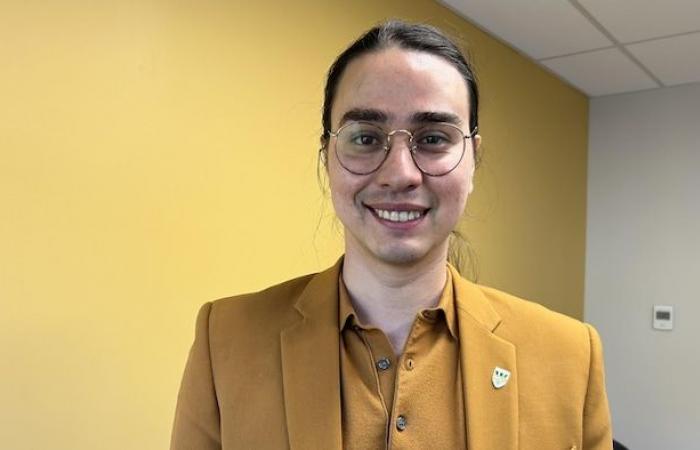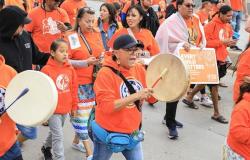The population is invited to march on Monday evening to mark the National Day for Truth and Reconciliation. The University of Quebec at Trois-Rivières (UQTR), in collaboration with the Native Friendship Center of Trois-Rivières (CAATR), hosts activities before the departure of the walkers to bring people together.
The walk starts at the main entrance to the Albert-Tessier pavilion of theUQTRvers 18 h 15.
Walkers will be welcomed at the port park by the Atikamekw group Northen Voice, to the sound of percussion and drums which will make traditional music resonate on the esplanade.
A sacred fire and testimonies will invite participants to a moment of meditation and reflection, in tribute to all the victims and survivors of residential schools.
For the general director of CATRMaud Flamand, the march is the very symbol that reconciliation between peoples is moving forward. It is, she said, a concrete gesture to demonstrate solidarity with survivors.
Open in full screen mode
Maud Flamand says she feels “a great openness” on the part of non-natives, who wish to learn about indigenous realities.
Photo : Radio-Canada / Perrine Bullant
We have family, we have acquaintances who had really difficult times with their time at boarding school.
shares Ms. Flamand.
Her mother lived in a residential school during her childhood, like more than 150,000 indigenous people who were forcibly sent there from 1830 to 1997. Hearing her experience touched her deeply.
So it’s very important to remember, to collect ourselves, and I believe that it’s part of a healing process too.
For Maud Flamand, the National Day for Truth and Reconciliation is a time to build bridges, walking side by side.
Symbol of remembrance and healing
Walkers, as well as the entire population, are invited to wear Orange sweaters to honor the memory of children subjected to physical and sexual abuse, many of whom died, in residential schools.
Since 2013, September 30 has been Orange Shirt Day, which aims to recognize the trauma left by Canada’s residential schools and begin the process of reconciliation.
The symbol comes from the story of Phyllis Webstad, a girl who was 6 years old when she was taken from her family and sent to the St. Joseph’s Mission residential school in British Columbia.
The girl’s grandmother had bought her a brand new orange sweater, with savings, a few days before school started.
When he arrived at the boarding school, officials confiscated his orange sweater and gave him a uniform.
It is from her testimony, as a survivor, that this symbol was born which has been displayed every September 30 for eleven years now.
In addition to the orange sweater, women can wear the long skirt, which represents resilience, survival, identity and hope.
Know indigenous realities
Business employees and organization volunteers will also be able to participate in a workshop to identify the issues that Indigenous people encounter on a daily basis.
The objective is to equip them to improve the accessibility of their services to community members.
The Director of Relations and Engagement with the First Peoples of theUQTRSamuel Rainville, will lead the activity and will also teach participants to better identify opportunities to create meaningful alliances with First Peoples stakeholders.
Open in full screen mode
Samuel Rainville explains that the orange sweater is a symbol of regaining power that can be worn by the entire population as a sign of solidarity.
Photo : Radio-Canada / Perrine Bullant
He notes that several efforts can be made in this area. There is racism in certain systems
he denounces.
However, he believes let’s get there quietly
because more and more issues are being identified to enable community members to receive quality care and services.
The general director of CATR shows that it is the lack of information in relation to indigenous realities which can sometimes lead to situations of discrimination
.
As indigenous and non-indigenous cultures are different, walking is, for her, a great opportunity to understand others.
According to a column on the show Fin PM







